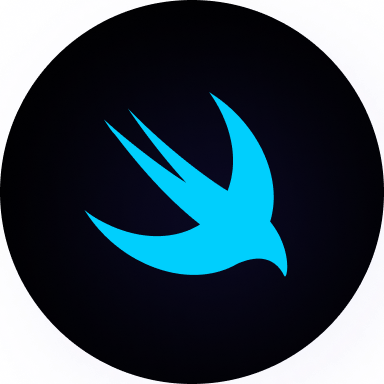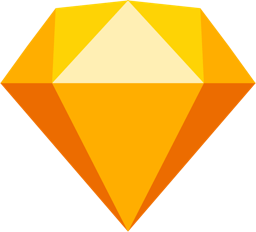Icon Animation
Add to favorites
Learn to build a 3D animated weather icon using Spline's intuitive interface and powerful features
Play video
3D UI Interactive Web Design with Spline
1
Introduction to Spline
10:24
2
3D Shapes and Materials
9:45
3
Weather Icon and Sculpting
13:29
4
Icon Animation
9:27
5
Path Animation
9:35
6
Waves Animation
15:33
7
3D Card with Parallax
9:57
8
Button Components
11:41
9
Screen Resize Adaptive Layout
10:43
10
Tab Bar Animation
21:23
11
UI Charts and Variables
16:54
12
Scroll Interaction and Scenes
9:18
13
Export to USDZ and Optimizations
9:28
14
Publish to 3D Site
3:48
![]()
Base State And State
- Base State: A base state refers to the initial or default state of an object before any changes or animations are applied.
- State: A state is a specific setup that defines how an object looks or behaves at a particular time. It can include changes in size, position, color, and more.
State-based animation lets you create and switch between different setups (states) for an object to see how it changes over time.
![]()
Events And **Interactivity**
Spline's interactive events can turn your static 3D designs into dynamic, responsive experiences. These events, which respond to user inputs and environmental triggers, offer a versatile toolkit for creating engaging scenes. Let's explore each of these events and their functions in detail.
![]()
Start Event
The Start event is triggered when the Spline scene is loaded. It's often used to initiate an animation or action, such as rotating an object, as soon as the scene opens.
Mouse Events
Mouse events are set off by user mouse interactions. They include:
- Mouse Up: Triggered when the user releases the mouse button. It can be used to halt an action initiated by a Mouse Down event.
- Mouse Down: Activated when the user presses the mouse button. It typically starts an interaction, like dragging an object.
- Mouse Press: Triggered when the user clicks (presses and releases) the mouse button. Commonly used for actions like opening a link or toggling an animation.
Key Events
Key events are activated by user keyboard interactions and consist of:
- Key Up: Triggered when the user releases a key. Often used to stop an action initiated by a Key Down event.
- Key Down: Activated when the user presses a key. Commonly used to start an interaction, like moving an object.
- Key Press: Triggered when the user presses and releases a key. Typically used for actions like toggling an animation or changing a scene.
Scroll Event
The Scroll event is triggered when the user scrolls on the scene. It can create parallax animations or control an animation based on the scroll position.
Look At Event
The Look At event is activated when the camera's view direction intersects with a specific object. You can use it to create experiences where objects react when looked at or when they enter the camera's field of view.
Follow Event
The Follow event allows an object to follow another object's path or location in the scene. This event is useful for creating guided animations or for objects that need to maintain a specific relation to another object.
Game Controls Event
Game Controls events are triggered by user interactions similar to those in video games. For example, you can create an event that moves an object forward when the "W" key is pressed, or rotates an object when the arrow keys are pressed.
Conditional Logic Event
Conditional Logic events allow actions to occur based on certain conditions. For example, an animation might only play if an object is in a specific location, or a sound might play if an object collides with another object.
Collision Event
Collision events are triggered when two objects in the scene collide or intersect. This is useful for creating realistic interactions between objects, such as bouncing, breaking, or changing direction upon collision.
Variable Change Event
Variable Change events trigger when a defined variable changes its value. This event allows you to create actions based on the state of your variables, enabling more complex and dynamic interactions.
Set Variable Event
The Set Variable event allows you to change the value of a defined variable. This event can be used in conjunction with Variable Change events to control the flow of your scene based on variable states.
Actions
In Spline, actions are the responses to events. They allow you to create dynamic and interactive designs by defining what happens when an event occurs. Let's explore each of these actions, their functionality, and how they can enrich your 3D designs.
![]()
Transition Action
Transition action is used to smoothly change property values of an object over time. It allows you to animate properties like position, scale, rotation, color, and opacity.
Sound Action
Sound action is used to play a sound file in response to an event. It can be used to enhance the user experience by adding audio feedback to interactions.
Video Action
Video action is used to control video playback. It can play, pause, or stop a video, or even change the current time of the video in response to an event.
Open Link Action
Open link action opens a URL in a new browser tab. It's typically used to navigate the user to a different webpage or to download a file.
Reset Scene Action
Reset scene action resets the scene to its initial state. It can be useful in situations where you want to give the user the ability to start over.
Create Object Action
Create object action dynamically adds a new object to the scene. This can be used to create interactive experiences where objects appear in response to user actions.
Scene Transition Action
Scene Transition action is used to transition from the current scene to a different scene. It's often used in multi-scene projects to navigate between different scenes.
Animation Action
Animation actions are used to trigger animations on objects that have been previously imported as animated objects. This means you need to import an animated object first before you can use animation actions.
Set Variable Action
Set variable action changes the value of a defined variable. This can be used in conjunction with variable change events to create complex interactions based on the state of your variables.
Animating the Sun
The first step is to animate the sun. We're going to create a simple rotation animation.
![]() 📔 Please proceed from the previous section on Weather Icon and Sculpting. Alternatively, you can download the content from the link provided.
📔 Please proceed from the previous section on Weather Icon and Sculpting. Alternatively, you can download the content from the link provided.
Creating States
- Navigate to the States panel on the right sidebar.
- Click on the plus icon to add a new state.
- In the Transform panel, set the Y rotation to 360 degrees.
Setting Up Events
- Go to the Event panel, then click on the plus icon to add an event.
- Choose Start for the event type.
Defining Actions
- For the action, click on the plus icon to add a new action.
- Choose Transition.
- In the Target dropdown, choose Sphere.
- Set Transitions 1 to Base State and Transitions 2 to State.
- Set the animation to Ease In Out, with a duration of 4 seconds.
- Set the sequence to Loop Infinity.
![Icon Animation2222 image 6]()
Animating the Sunbeam
Next, we will animate the sunbeam. Select the cylinder representing the sunbeam to start.
Creating States
- Navigate to the States panel on the right sidebar.
- Click on the plus icon to add a new state.
- Switch back to the Base State, then go to the Cloner panel.
- Change End to 0.
- Switch back to State, then go to the Cloner panel.
- Change End back to 360.
- Add a third state.
- Change the Z value to -360.
![Icon Animation2222 image 7]()
Setting Up Events
- Go to the Event panel, then click on the plus icon to add an event.
- Choose Start for the event type.
Defining Actions
- For the action, choose Transition.
- In the Target dropdown, choose Cylinder.
- Set Transitions 1 to Base State and Transitions 2 to State.
- Set the animation to Ease In Out, with a duration of 1 second.
- Set the sequence to Loop None.
- Click on the plus icon to add a new action.
- Choose Transition.
- In the Target dropdown, choose Cylinder.
- Set Transitions 1 to State and Transitions 2 to State 2.
- Set the animation to Ease In Out, with a duration of 4 seconds, and Loop None.
- Set the sequence to Delay 1 Second, and Loop Infinity.
![]()
Animating the Cloud
Next, we will animate the cloud layer to give it a floating effect.
Creating States
- Navigate to the States panel on the right sidebar.
- Click on the plus icon to add a new state.
- Go to the Material panel and change the Displace settings.
- Set Scale to 10 and Movement to 6.
- Set Offset to X -43, Y 30, Z 10, and Intensity to 18.
![]()
Setting Up Events
- Go to the Event panel, then click on the plus icon to add an event.
- Choose Start for the event type.
Defining Actions
- For the action, choose Transition.
- In the Target dropdown, choose Cloud.
- Set Transitions 1 to Base State and Transitions 2 to State.
- Set the animation to Ease In Out, with a duration of 6 seconds.
- Set the sequence to Loop Infinity, and Cycle to Ping Pong Reverse.
![]()
Animating the Raindrop
Now that we have our sun, the final touch to our 3D weather icon is animating a raindrop. Here's how to create and animate the raindrop.
Setting up the Raindrop
We will work on one single cylinder.
- Select the cylinder layer.
- Move the raindrop and make sure that the raindrop is inside the cloud.
- Change the Z rotation to 45.
- Hide the cloud layer for better visibility.
Creating States
- Navigate to the States panel on the right sidebar.
- Click on the plus icon to add a new state.
- Select the green arrow and move it down about 50 units.
- Go to the Material property and detach it.
- Set all layers to 0 opacity.
![Icon Animation2222 image 4]()
Setting Up Events
- Go to the Event panel, then click on the plus icon to add an event.
- Choose Start for the event type.
Defining Actions
- For the action, choose Transition.
- In the Target dropdown, choose Raindrop.
- Set Transitions 1 to Base State and Transitions 2 to State.
- Set the animation to Ease Out, with a duration of 1 second.
- Set the sequence to Loop Infinity.
![]()
Duplicating the Raindrop
Creating multiple raindrops can give the animation a more realistic feel. Here's how to duplicate our animated raindrop.
- Use the Cloner to duplicate the raindrop.
- Go to the Cloner panel.
- Set the Type to Linear and Base to Hidden.
- Set the Count to 4.
- Set the Position to X 21, Y -21, Z 0.
- Click "Convert to Instances". This will create a component and its instances.
![Icon Animation2222 image 6]() 📔 Please note that your design and positioning may differ from mine. Adjust accordingly to suit your preferences and requirements.
📔 Please note that your design and positioning may differ from mine. Adjust accordingly to suit your preferences and requirements.
Finally, let’s add some delay for the raindrop.
- Select the cylinder inside the group to change the animation.
- Cylinder 1: Delay none.
- Cylinder 2: Delay 0.40.
- Cylinder 3: Delay 0.2.
- Cylinder 4: Delay 0.8.
![]()
Conclusion
And there you have it! You've just created a 3D weather icon using Spline. The animation brings the icon to life, making it more engaging and interactive for users. Remember, 3D and animation are powerful tools in UI design, and with Spline, the possibilities are limitless. Happy designing!
Templates and source code
Download source files
Download the videos and assets to refer and learn offline without interuption.
Design template
Source code for all sections
Video files, ePub and subtitles
Assets
1
Introduction to Spline
Learn 3D design, UI animations, icons, components, variables, screen resizing, scrolling, and optimize and publish 3D assets online
10:24
2
3D Shapes and Materials
Creating a 3D Icon in Spline: a step-by-step guide
9:45
3
Weather Icon and Sculpting
Master the art of 3D design with Spline's user-friendly interface, and learn how to create a stunning weather icon in a few easy steps.
13:29
4
Icon Animation
Learn to build a 3D animated weather icon using Spline's intuitive interface and powerful features
9:27
5
Path Animation
Learn how to create 3D paths with the path tool and to edit them
9:35
6
Waves Animation
Mastering Wave Animation with the Spline 3D Tool
15:33
7
3D Card with Parallax
Creating a 3D Card with Parallax Effect using a glass layer
9:57
8
Button Components
Simplify Your Design Workflow with Spline Components for Reusable and Dynamic Object Creation
11:41
9
Screen Resize Adaptive Layout
Creating adaptive layouts with Screen Resize Events using Breakpoints and Transitions
10:43
10
Tab Bar Animation
Crafting Futuristic UI: Designing a Glass Tab Bar with Crystal Floating Button using Spline
21:23
11
UI Charts and Variables
Exploring Variables Usage in Interactive UI Design
16:54
12
Scroll Interaction and Scenes
Crafting Scroll-Based Interactions and Scenes for Web Design
9:18
13
Export to USDZ and Optimizations
Creating immersive AR experiences on iOS devices using Spline's 3D models
9:28
14
Publish to 3D Site
Easily embed your 3D creations on web pages using Spline's native HTML component, the Spline Viewer
3:48
Meet the instructor
We all try to be consistent with our way of teaching step-by-step, providing source files and prioritizing design in our courses.
Akson Phomhome
UI Designer
Designer at Design+Code.
13 courses - 60 hours

AI Design with Ideogram
Meet Ideogram, an AI-powered image generation tool that takes your ideas and transforms them into stunning visuals. Whether you're a designer, marketer, or just a visual enthusiast, Ideogram simplifies the creative process. In this guide, we’ll walk you through step-by-step instructions to create beautiful logos, social media posts, and more.
1 hrs

Build a SwiftUI app with Claude AI
This comprehensive SwiftUI course combines cutting-edge AI assistance with hands-on development, guiding you through the process of transforming Figma designs into fully functional iOS applications. Leveraging Claude 3.5 Sonnet, you'll learn to efficiently generate and refine SwiftUI code, create reusable components, and implement advanced features like animations and responsive layouts.
9 hrs

Prototype and Code iOS apps in Figma and SwiftUI
Welcome to our course on designing a sleek wallet interface with Figma! You’ll learn to create a visually appealing and functional wallet interface using DesignCode and Apple UI Kits. Master prototyping, swipe gestures, carousel animations, overlays, and reusable components. Plus, explore a Figma plugin to easily transition from design to SwiftUI. By the end, you’ll create dynamic, user-friendly prototypes.
3 hrs

Create 3D UI for iOS and visionOS in Spline
Comprehensive 3D Design Course: From Basics to Advanced Techniques for iOS and visionOS using SwiftUI
3 hrs

3D UI Interactive Web Design with Spline
Learn to create 3D designs and UI interactions such as 3D icons, UI animations, components, variables, screen resize, scrolling interactions, as well as exporting, optimizing, and publishing your 3D assets on websites
3 hrs

Design and Prototype for iOS 17 in Figma
Crafting engaging experiences for iOS 17 and visionOS using the Figma design tool. Learn about Figma's new prototyping features, Dev Mode, variables and auto layout.
6 hrs

Design and Prototype Apps with Midjourney
A comprehensive course on transforming Midjourney concepts into interactive prototypes using essential design techniques and AI tools
8 hrs

Web App Design using Midjourney and Figma
Get UI inspirations from Midjourney and learn UI design, colors, typography as a beginner in Figma
2 hrs

UI Design for iOS 16 in Sketch
A complete guide to designing for iOS 16 with videos, examples and design files
3 hrs

UI Design Android Apps in Figma
Design Android application UIs from scratch using various tricks and techniques in Figma
2 hrs

UI Design Smart Home App in Figma
Design a Smart Home app from scratch using various tricks and techniques in Figma
2 hrs

UI Design Quick Apps in Figma
Design application UIs from scratch using various tricks and techniques in Figma
12 hrs

Figma Handbook
A comprehensive guide to the best tips and tricks in Figma. Not affiliated with or endorsed by Figma, Inc.
6 hrs
